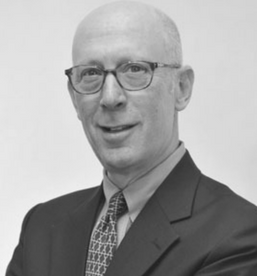“I remember the thrill of talking to other ham radio operators. My idea in connecting the scholars of the world was a natural extension of my interest in ham radio,” he said.
And connect scholars he did… Fuchs co-founded BITNET in 1981 by establishing a connection between City University of New York (CUNY) and Yale University. BITNET was an important precursor to the commercialized Internet we use today, offering many of the Internet’s cores services such as email, file transfer and instant messaging, as well as helping to establish expectations about openness and free access. The network grew to connect 1,400 universities in 49 countries around the world.

Fuchs became interested in computers in the 1960s while studying physics at Columbia University. It was a time when mainframes were becoming important for academics and research.
“I became involved as an undergraduate. I worked at the computing center and in my senior year I worked as a systems programmer,” he explained.
While working on his master’s degree in computer science, he was introduced to early email and more advanced networking systems. At 24, he was hired as the executive director of the first centralized computer facility at CUNY.
“The university had 22 campuses and 250,000 students. One of my goals was to establish networking among all the campuses for email, file transfer and interactive messaging,” he said. “We placed a small to medium size IBM 360 at each campus, using leased lines to connect them to two large mainframes at the central facility. By the mid 80s we had built the CUNY network, thereby creating what was perhaps the largest academic computing complex in the country at the time.”
Fuchs’ inspiration to expand the network to other colleges and universities came from talking to a college classmate who was working on IBM’s VNET system, which connected all of IBM’s locations. “We were sitting around talking and one of us said, ‘Why not do the same for higher ed?’”
Fuchs took the idea to Greydon Freeman, director of computing at Yale, and the idea for BITNET was born. The name, Fuchs said, originally stood for “Because it’s there,” but they renamed it to “Because it’s time,” he said, “because it sounded better.”
They began by connecting Yale and CUNY, while Fuchs simultaneously wrote to about 40 other universities, mostly along the East Coast.
“I simply posed this idea,” Fuchs said. “We are thinking of interconnecting all these institutions, and the terms are very simple. Each school must run a leased line to another connected school, it must agree to pass all other school’s traffic at no cost, and it must permit another school to connect to it. Lo and behold, the response was extremely positive. Virtually everyone said yes, let’s do it.” So, he added, it was done without a nickel of funding from outside the institutions.
Before long, the University of California wanted in. They paid for a line all the way back to CUNY, Fuchs said, and then they connected the other institutions in California.
“Then an interesting thing happened,” Fuchs remembered. “IBM came to me in 1984 and said ‘how would you like BITNET to expand to Europe?’ I said, ‘Yes, that sounds great.’ They said, ‘We are prepared to pay for intercountry links in Europe and for a line across the Atlantic. All we ask is that you spend the next year traveling in Europe, lecturing about the benefits of computer-mediated communications.’”
Fuchs filled a passport or two, and in only a few years BITNET grew to be the largest global academic network, reaching over 1,400 colleges, universities, and research laboratories in the U.S., Canada, Europe, Asia and South America.
“We even managed, after many months of discussions with the Department of Commerce, to convince them that connection to the USSR would not lead to the end of humanity,” he noted. At that point, “BITNET became a worldwide network and I had reached my original goal, which was to connect the scholars of the world.”
Fuchs went on to become a co-creator of LISTSERV, the first networked list manager; a founder of JSTOR, a nonprofit organization dedicated to archiving and providing access to important scholarly journals; and a founding trustee of both the Advanced Computing Systems Association (USENIX) and the Internet Society.
Now retired, Fuchs said he has, among other things, gone back to playing with ham radio.
“I’m trying to figure out how the hobby has survived and evolved over the last 50 years,” he said. “And how they use the Internet as an adjunct to radio communications.”